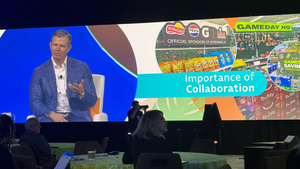Study: Digital Coupons Key to Successful Product LaunchesStudy: Digital Coupons Key to Successful Product Launches
According to the study, Digital Coupon Redeemer: New Product Adoption, shoppers who use digital coupons drive almost two times more trial of new products when compared to all shoppers.
January 1, 2018
Shoppers who use digital coupons are more likely than the average shopper to try new products and to continue buying them, according to a newly released study by Quotient Technology. According to the study, Digital Coupon Redeemer: New Product Adoption, conducted in partnership with research firm GfK, shoppers who use digital coupons drive almost two times more trial of new products when compared to all shoppers.
"Consumer packaged goods companies (CPGs) are always looking to increase the odds of success for new brand launches," says Mir Aamir, president and COO at Quotient. "Our data was consistent among all of the new brands we looked at across a variety of CPG categories. Shoppers who use digital coupons are powerful buyers, and they are more likely to buy products again and again. Digital coupons continue to be an effective strategy to drive trial and repeat buying, ultimately leading to increased sales."
CPGs spend up to $160 million on new product advertising during the first year of launch, according to Nielsen's 2015 Breakthrough Innovation Report. Compared to mass media new product promotions, digital coupons are a cost-effective way to generate awareness for new products to a receptive audience.
After digital coupon shoppers try a new brand, they not only buy it again at a higher rate, but they continually buy more units per trip than the average shopper who tries the brand. Shoppers who use digital coupons purchased 1.5 times more units, also known as repeat unit volume, of those products than the average shopper.
The Quotient/GfK study analyzed 24 individual case studies for products that launched from 2013-2015. Digital coupons were offered for food and non-food categories of recognizable household consumer brands. For instance, one product launch was a new cereal line, another a new flavor of yogurt.
Separately, Kantar Media recently released a study that found that up to 80 percent of all new product launches in 2015 included digital coupon promotions. Because digital coupons can be personalized, CPGs can target shoppers who have specific buying habits and behaviors. This may be one reason why only 30 percent of CPGs promoted new products through national free-standing inserts (FSI)—paper coupons and circulars that shoppers receive in the mail. The shift to digital is notable. According to Kantar, CPG brands supported new product launches with an average of 2.6 FSI and 3.5 digital events last year, a 12 percent for FSI and 98 percent increase for digital.
"The digital coupon consumer segment shops and spends 30 percent more, annually, than the national average," says Neal Heffernan, senior vice president of shopper and retail strategy at GfK. "When we looked at new products' trial and repeat rates among the digital coupon consumer segment, we saw an increased success rate for all the new products we analyzed, which was a major new learning. Digital coupons are a hook and hold strategy—shoppers who use them, try new products more often and are more often happier with their purchase and continue to repeat at a faster rate than the national average."
About the Author
You May Also Like




